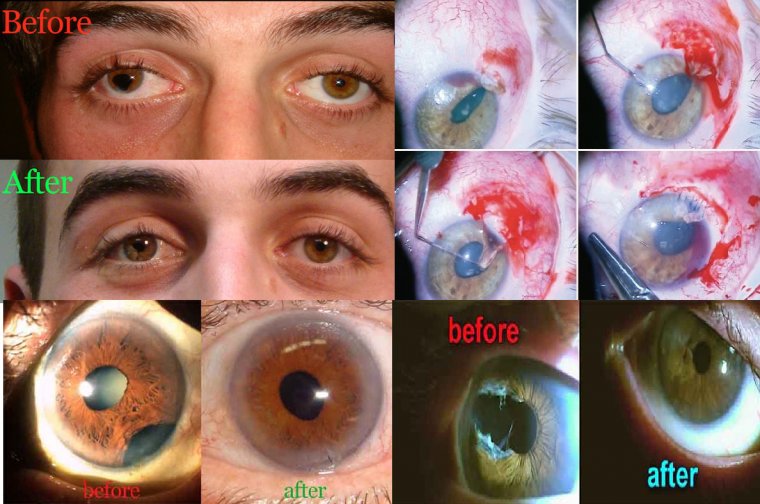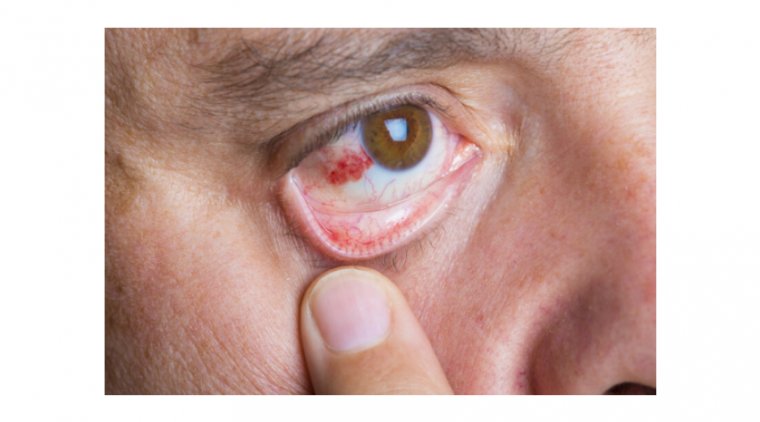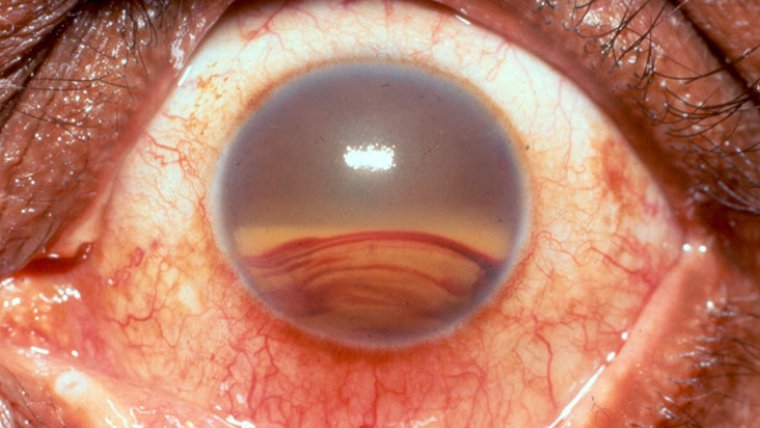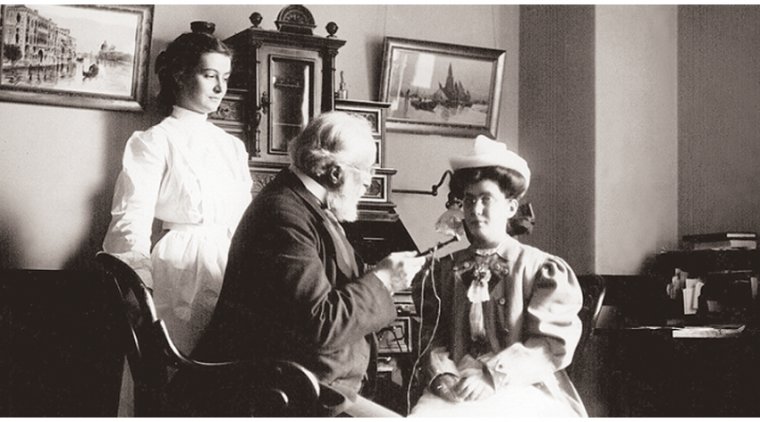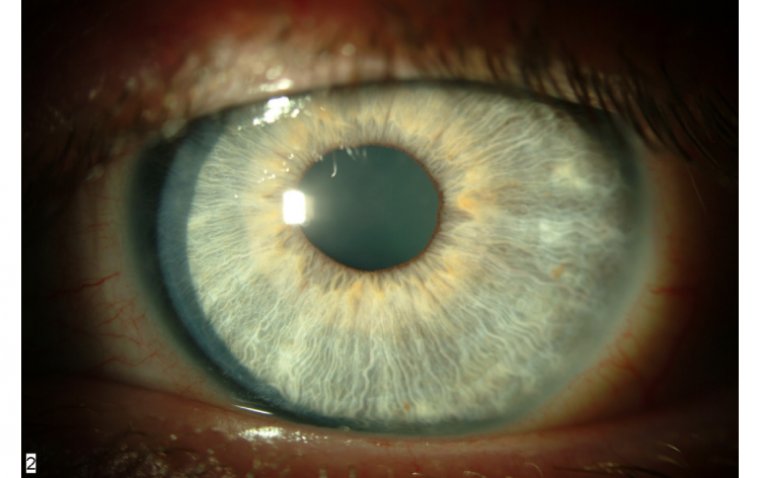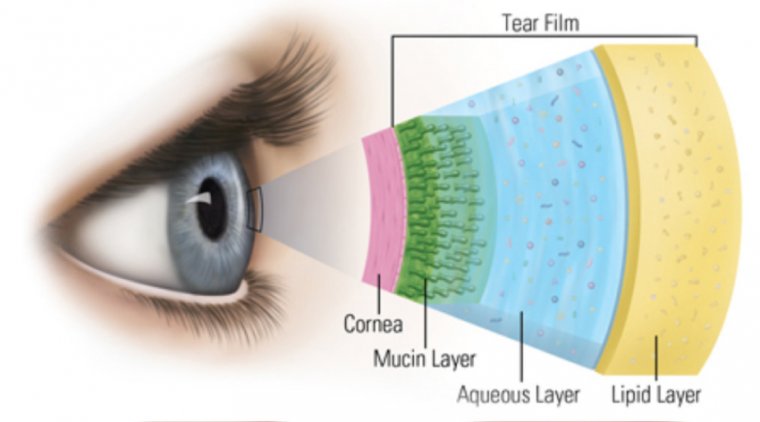
Roth Spots in the Eye: What You Need to Know
What are Roth Spots?
Roth spots are retinal hemorrhages with white or pale centers. They are named after Moritz Roth, who first described them in the late 19th century. In medical terms, Roth spots represent a significant clinical finding as they may indicate an underlying systemic condition or disease.
Upon ophthalmoscopic examination, Roth spots are typically observed as small, round, white-centered hemorrhages on the retinal surface. The white center is often attributed to a coagulum, which is a clotted mass of blood. The red outer ring consists of a layer of hemorrhaged blood.
Roth spots are associated with several systemic conditions and diseases. They were initially recognized in patients with bacterial endocarditis, a serious infection of the inner lining of the heart chambers and valves. However, Roth spots can also be seen in patients with other conditions such as leukemia, diabetes, hypertensive retinopathy, and certain autoimmune diseases. It's imperative that individuals displaying Roth spots undergo thorough medical evaluations to determine the underlying cause and receive appropriate management for any associated conditions.
Roth spots serve as a visual clue to the ophthalmologist, hinting at the broader health status of the patient. Their detection could potentially expedite the diagnosis and treatment of serious systemic diseases, making routine eye examinations crucial for individuals with known predisposing conditions or systemic diseases.
What Causes Roth Spots?
The appearance of Roth spots in the eye can be indicative of various underlying medical conditions and diseases. They are often a symptom of systemic issues, rather than an isolated ocular condition. Below are some of the medical conditions that may lead to the development of Roth spots:
1. Endocarditis
Endocarditis, an infection of the inner lining of the heart chambers and valves, is historically the most recognized condition associated with Roth spots. The spots are believed to result from septic emboli, which cause hemorrhages in the retina. The presence of Roth spots in individuals suspected of having endocarditis can aid in early diagnosis and treatment, potentially averting severe cardiac complications. The incidence of endocarditis is estimated at around 3 to 10 cases per 100,000 individuals annually.
2. Diabetes
Diabetic retinopathy, a common complication of diabetes, can also manifest Roth spots. High blood sugar levels over time can damage blood vessels in the retina, leading to hemorrhages. Roth spots in diabetic patients often indicate advanced stages of diabetic retinopathy and necessitate prompt intervention to prevent vision loss. Diabetes is a prevalent condition, with over 422 million individuals affected worldwide, thus posing a significant risk for the development of Roth spots and other ocular complications.
3. Hypertension
Hypertensive retinopathy is a condition arising from high blood pressure, which can cause damage to the retinal vessels and result in Roth spots among other signs. Chronic hypertension exerts increased pressure on the delicate vessels of the retina, leading to hemorrhages. Hypertension is a widespread condition, with an estimated 1.13 billion individuals affected globally. Early detection and management of hypertension can mitigate the risk of Roth spots and other ocular manifestations.
Symptoms of Roth Spots

Credit: New England Journal of Medicine
The presence of Roth spots themselves may not exhibit noticeable symptoms to the individual; they are often discovered during a routine eye examination or an examination driven by symptoms of an underlying condition. However, depending on the associated systemic condition, a range of symptoms might be experienced.
Here are some common and less common symptoms associated with Roth spots:
● Visual Disturbances
Blurred or distorted vision can occur if Roth spots are associated with conditions like diabetic retinopathy or hypertensive retinopathy.
Floaters or spots drifting in the field of vision might be noticed, especially if hemorrhages are significant.
● Other Ocular Symptoms
Eye pain or discomfort may be present, though it's less common.
Redness or other discoloration in the white of the eye.
● Systemic Symptoms
Fever, fatigue, and other systemic symptoms might be present, especially in conditions like endocarditis.
Unintentional weight loss, night sweats, or other systemic signs of underlying diseases like leukemia can be present.
● Cardiac Symptoms
Chest pain or discomfort may be experienced in cases of endocarditis or other cardiac conditions.
Shortness of breath or other cardiac symptoms could also be present, hinting at a more serious underlying condition.
Diagnosis and Medical Evaluation
Identifying Roth spots and determining their underlying cause is a vital step towards comprehensive patient care. The diagnostic process involves a thorough examination and various tests to assess the systemic health of the individual.
Ophthalmologic Examination: The primary method of diagnosing Roth spots is through an ophthalmologic examination. A detailed eye examination including fundoscopy (examination of the retina) is performed. During this examination, an ophthalmoscope is used to illuminate and magnify the interior surface of the eye, allowing the ophthalmologist to visualize any Roth spots or other retinal abnormalities. The appearance, location, and number of Roth spots, along with other retinal changes, provide valuable information regarding the possible underlying cause.
Related Diagnostic Tests: Once Roth spots are identified, it's crucial to perform additional diagnostic tests to uncover the underlying health condition causing them. The type of tests ordered would depend on the suspected condition based on medical history and other clinical findings. Some of these tests may include:
● Blood Tests:
Complete blood count, blood cultures, or other specific serologic tests can provide insight into systemic conditions like endocarditis, leukemia, or diabetes.
● Cardiac Evaluation:
Echocardiography, electrocardiogram (ECG), and other cardiac assessments can be crucial when endocarditis or other cardiac conditions are suspected.
● Blood Pressure Measurement:
Monitoring blood pressure is essential if hypertensive retinopathy is suspected as the cause of Roth spots.
● Endocrine Assessment:
Blood glucose levels and other endocrine assessments are vital for diagnosing diabetes and managing diabetic retinopathy.
● Imaging Studies:
Chest X-rays, CT scans, or other imaging studies might be warranted to assess overall health and to check for signs of systemic disease.
What is the Difference between Roth spots and Janeway Lesions?
Roth spots and Janeway lesions are both clinical signs that can be associated with systemic conditions, particularly infective endocarditis. However, they manifest in different areas of the body and have distinct appearances and implications.
1. Location and Appearance
- Roth Spots: These are retinal hemorrhages observed in the eye, characterized by a white or pale center surrounded by a reddish outer ring. They are primarily visualized through an ophthalmoscopic examination of the retina.
- Janeway Lesions: These are non-tender, small, erythematous or hemorrhagic macular lesions on the palms or soles. They are easily visible during a physical examination.
2. Pathophysiology
- Roth Spots: The pathophysiology of Roth spots is believed to involve septic emboli or immune complex deposition leading to retinal hemorrhages with a central white area due to fibrin deposition.
- Janeway Lesions: Janeway lesions are thought to be caused by septic emboli that result in small areas of infection or hemorrhage in the skin.
3. Association with Systemic Conditions
- Both Roth spots and Janeway lesions can be associated with infective endocarditis. Their presence, among other signs and symptoms, can raise suspicion of this serious cardiac condition.
4. Diagnostic Implication
- Roth Spots: The detection of Roth spots may require a more specialized ophthalmologic examination, and they can indicate a range of systemic conditions beyond endocarditis, such as leukemia, diabetes, or hypertensive retinopathy.
- Janeway Lesions: The presence of Janeway lesions is more specifically associated with infective endocarditis and can be identified during a routine physical examination, making them a more straightforward diagnostic sign of this condition.
How to Treat Roth Spots
The treatment of Roth spots primarily revolves around addressing the underlying condition causing them. A multidisciplinary approach often ensures a holistic management plan. Here are the treatment modalities categorized under medical management, surgical interventions, and preventive measures:
● Medical Management: The medical management aims at treating the underlying systemic conditions associated with Roth spots. Some common medical approaches include:
● Antibiotic Therapy: In cases where Roth spots are associated with infective endocarditis, a course of antibiotics is crucial to manage the infection.
● Antihypertensive Medication: For patients with hypertensive retinopathy, controlling blood pressure with antihypertensive medications can prevent further retinal hemorrhages.
● Glucose Control: Tight glucose control in diabetic patients can mitigate the progression of diabetic retinopathy and the occurrence of Roth spots.
● Surgical Interventions: Surgical interventions might be necessary depending on the severity of the underlying condition and its impact on the eye:
- Vitrectomy: In severe cases of retinal hemorrhages, a vitrectomy might be performed to clear the blood from the eye and improve vision.
- Retinal Laser Surgery: Laser surgery can be utilized to manage severe retinal diseases associated with Roth spots, like diabetic retinopathy.
Prevention and Management of Roth Spots
Preventing Roth spots largely involves managing and mitigating the risks of the underlying health conditions that lead to their appearance. Here's how individuals, especially those with known underlying health conditions, can work towards preventing Roth spots and managing their health effectively.
1. Lifestyle Modifications: Adopting a healthy lifestyle can significantly reduce the risk of conditions that may lead to Roth spots. Important lifestyle modifications include:
● Healthy Diet: A balanced diet rich in a variety of nutrients can help maintain a healthy body weight and control blood sugar and blood pressure levels.
● Regular Exercise: Regular physical activity can help manage body weight, blood sugar, and blood pressure, reducing the risk of diabetes and hypertension.
● Smoking Cessation: Smoking is a known risk factor for many systemic diseases including cardiovascular disease and diabetes. Quitting smoking can reduce these risks.
● Moderate Alcohol Consumption: Excessive alcohol consumption can contribute to hypertension and other health issues. Moderation in alcohol intake is advised.
2. Medical Management: Effective medical management of existing health conditions is crucial to prevent the occurrence or recurrence of Roth spots:
● Medication Adherence: Adhering to prescribed medications for conditions like hypertension, diabetes, or cardiovascular diseases is crucial for managing these conditions and preventing complications like Roth spots.
● Blood Pressure Control: Regular monitoring and effective control of blood pressure through medication and lifestyle changes can prevent hypertensive retinopathy.
Blood Sugar Monitoring: For individuals with diabetes, regular monitoring and control of blood sugar levels can prevent or delay the development of diabetic retinopathy.
3. Regular Health Check-ups: Regular health check-ups play a pivotal role in early detection and management of systemic conditions that may lead to Roth spots:
● Routine Eye Examinations: Regular ophthalmologic examinations can help in early detection of Roth spots and other retinal abnormalities, enabling timely intervention.
● Systemic Health Monitoring: Regular check-ups with primary care physicians for monitoring blood pressure, blood sugar, and overall cardiovascular health are essential.
● Specialist Consultations: Individuals with known systemic conditions should have regular follow-up appointments with relevant specialists to ensure optimal management of their health conditions.
Prevention and proactive management are the cornerstones of reducing the risk of Roth spots and ensuring good ocular and systemic health. Individuals, especially those with underlying health conditions, should work closely with their healthcare providers to develop a comprehensive and individualized plan for preventing and managing Roth spots and the associated systemic diseases.
Summary
Roth spots are white-centered retinal hemorrhages that can signal underlying systemic diseases such as infective endocarditis, diabetes, or hypertension. The appearance of Roth spots necessitates a comprehensive medical evaluation to uncover and address the root cause. Treatment primarily focuses on managing the underlying condition, with medical, surgical, and preventive approaches playing crucial roles. Lifestyle modifications like a balanced diet, regular exercise, and smoking cessation, alongside strict adherence to medical management for existing health conditions, are pivotal in preventing Roth spots.
Regular health check-ups, including routine eye examinations, are highly recommended for early detection and management of systemic conditions that might lead to Roth spots. The article emphasizes the importance of an interdisciplinary approach to patient care, where ophthalmologic findings serve as a window to the systemic health of the individual.
We encourage readers to seek prompt medical attention for any eye-related symptoms or visual disturbances. Early intervention and proactive management of systemic health conditions are essential for preventing Roth spots and ensuring good ocular and overall health.
(1).jpg)

